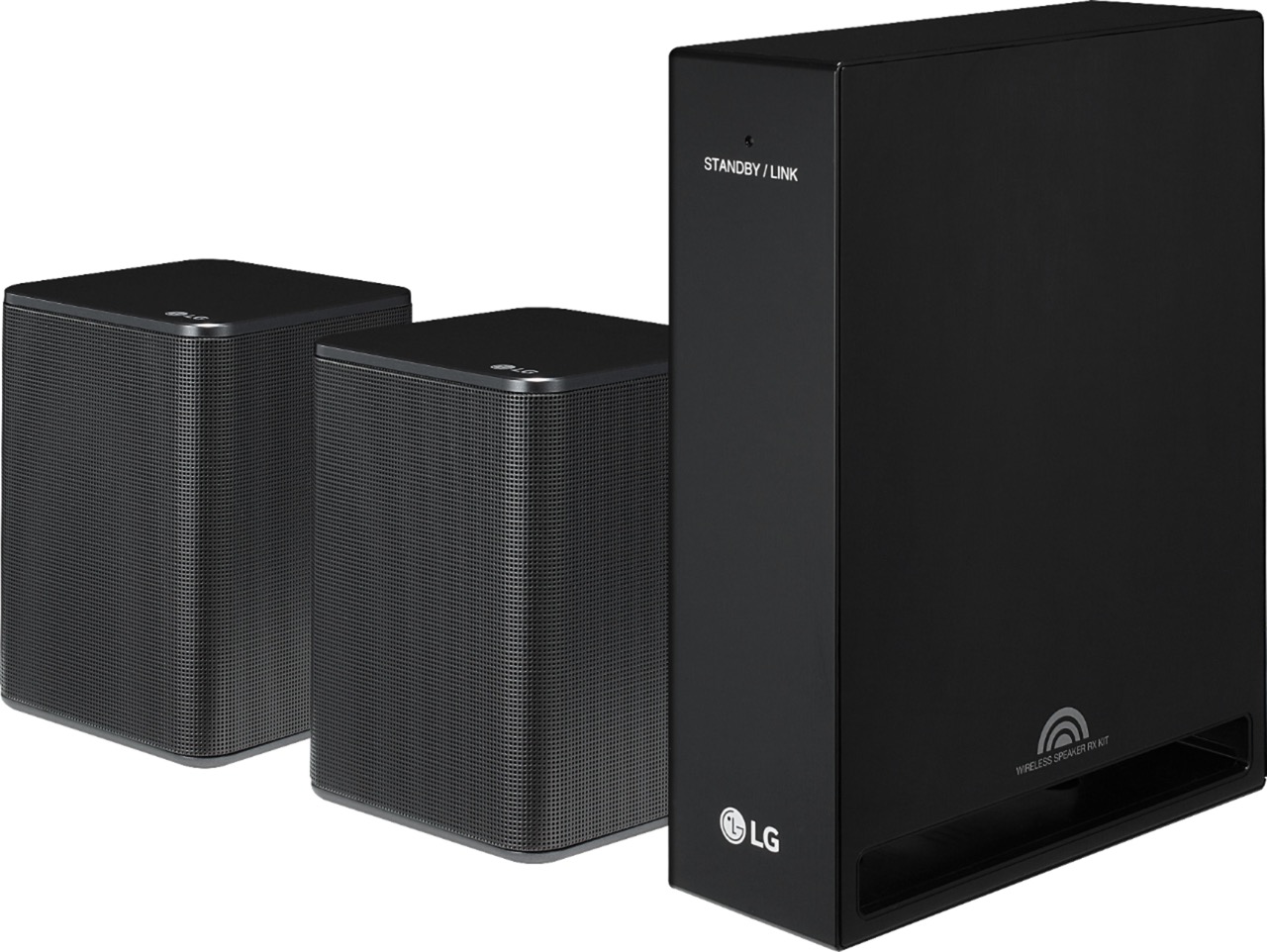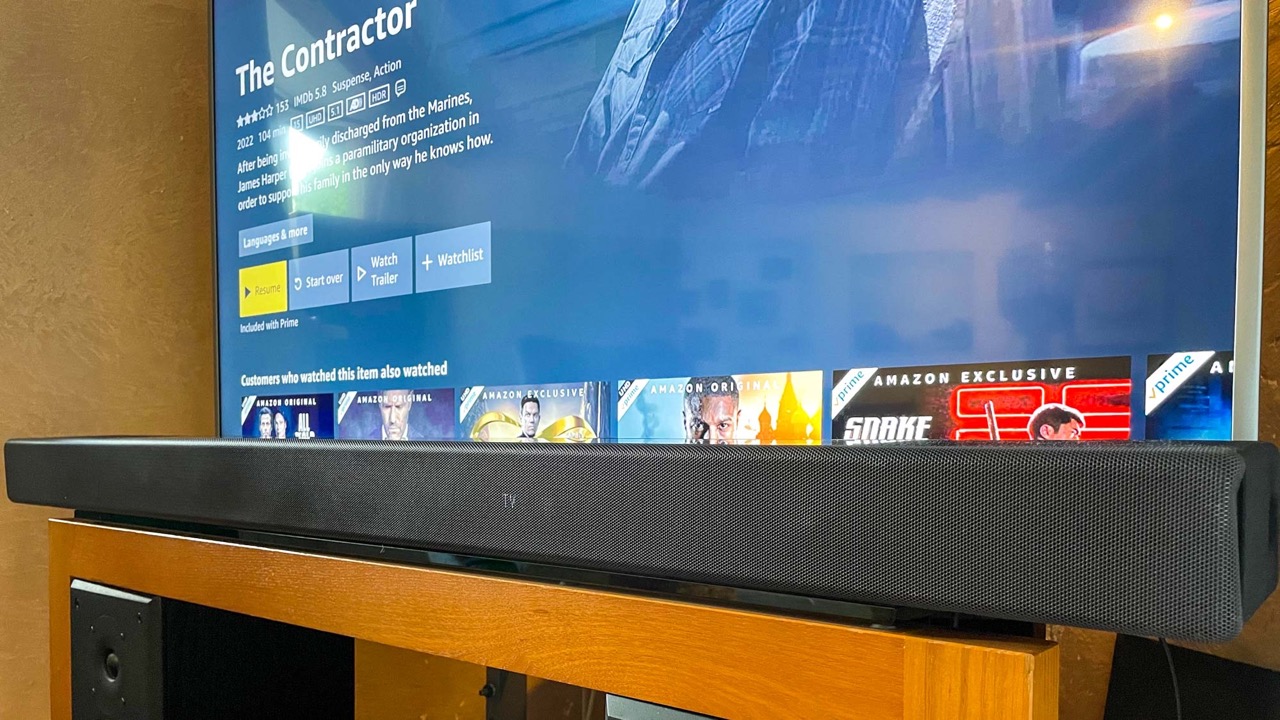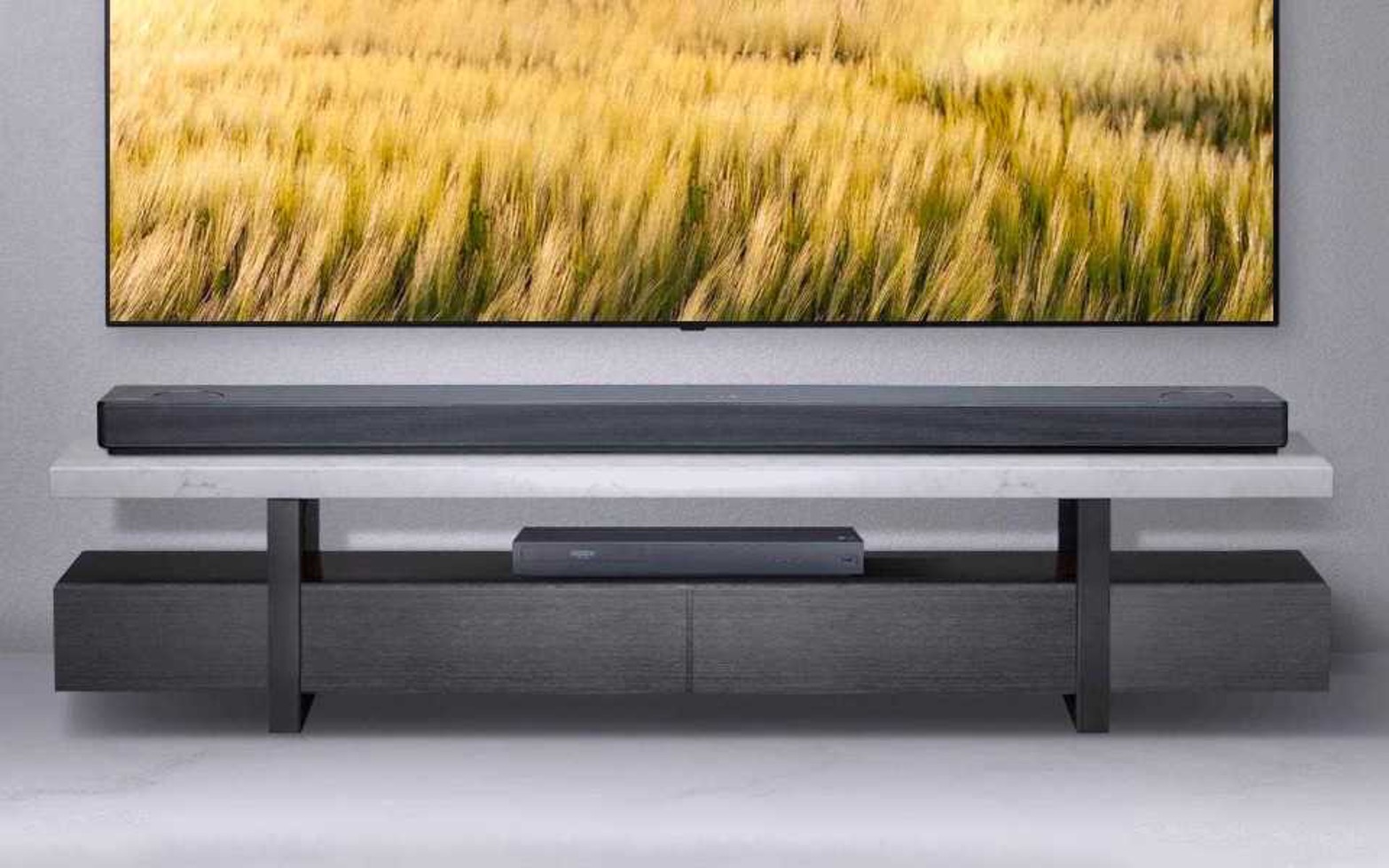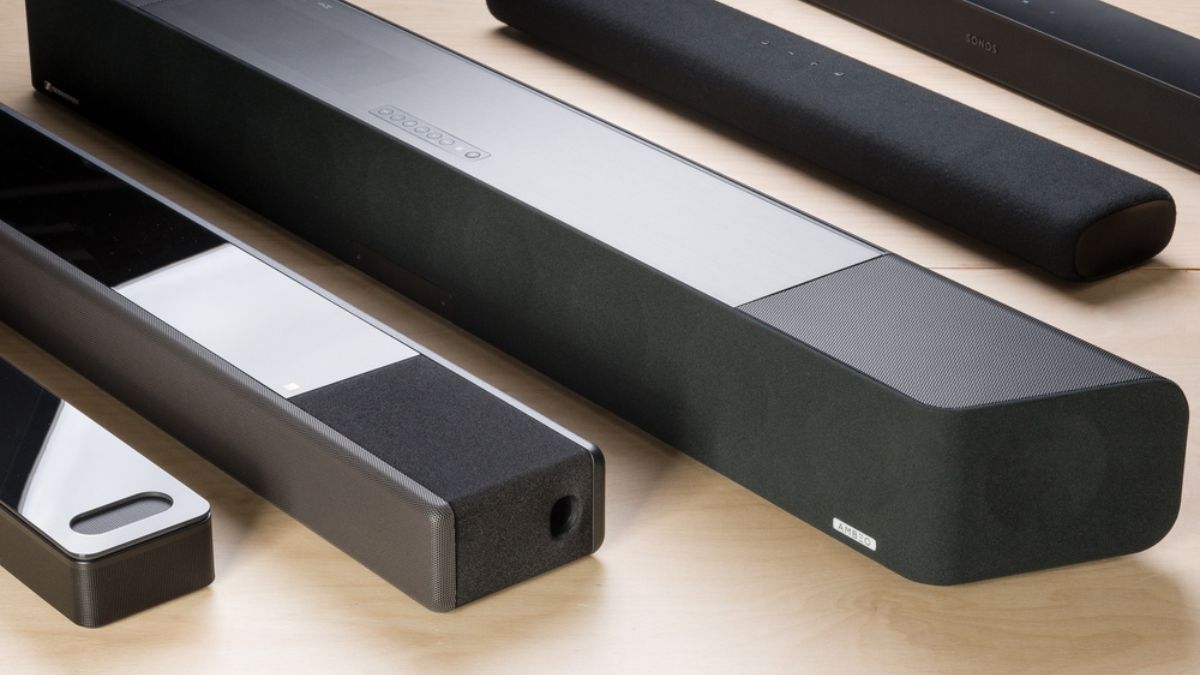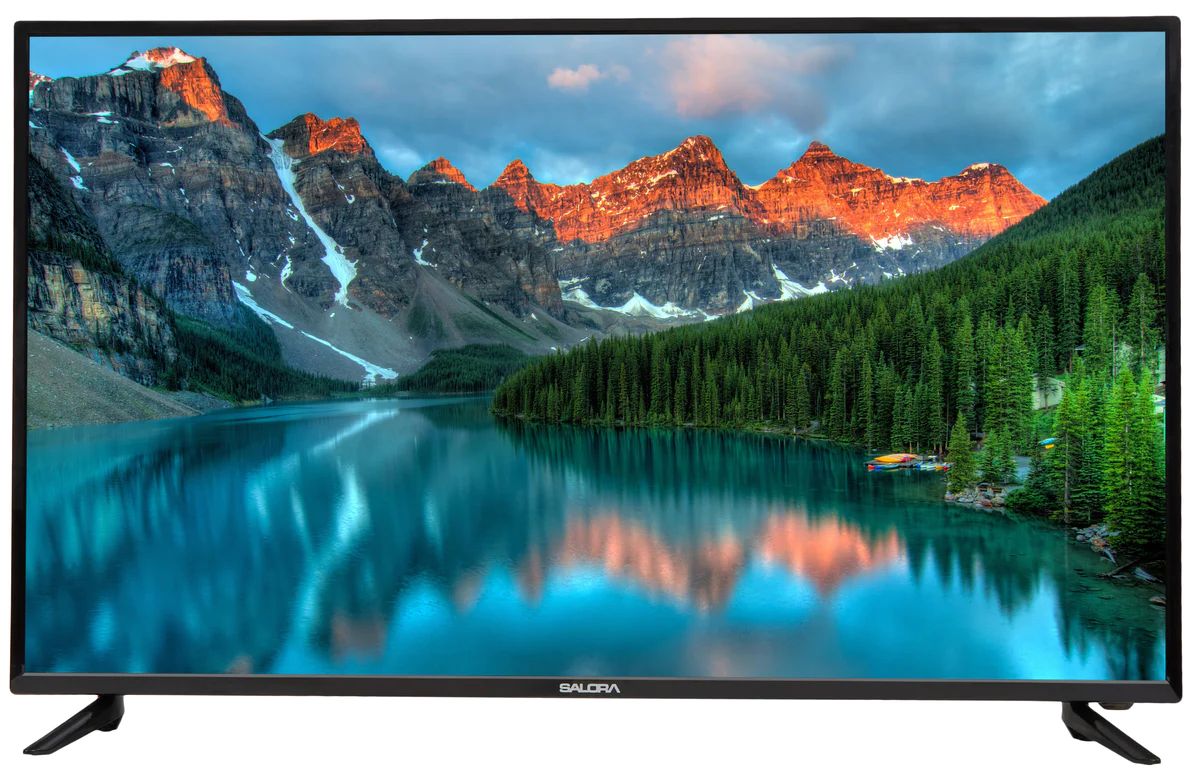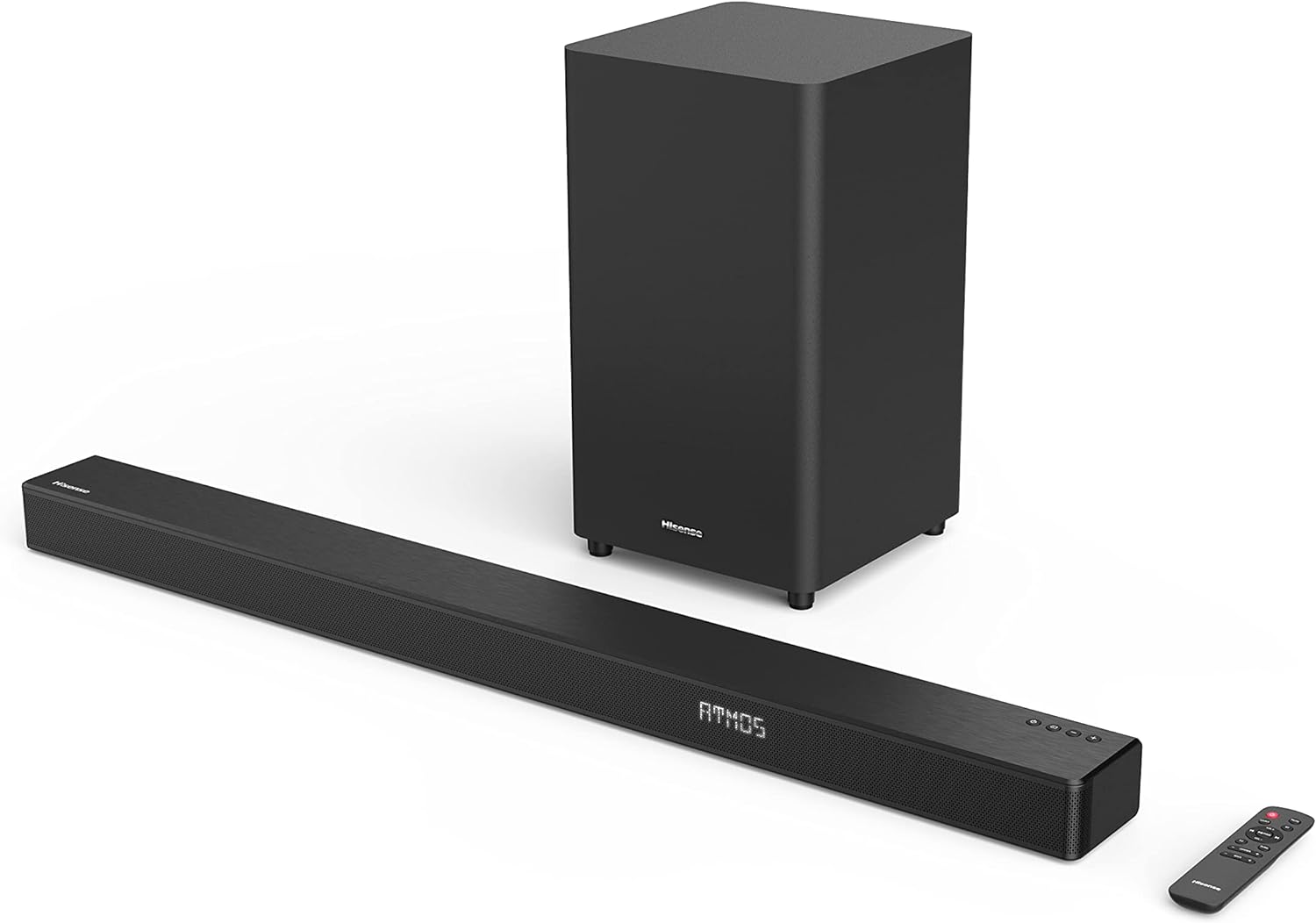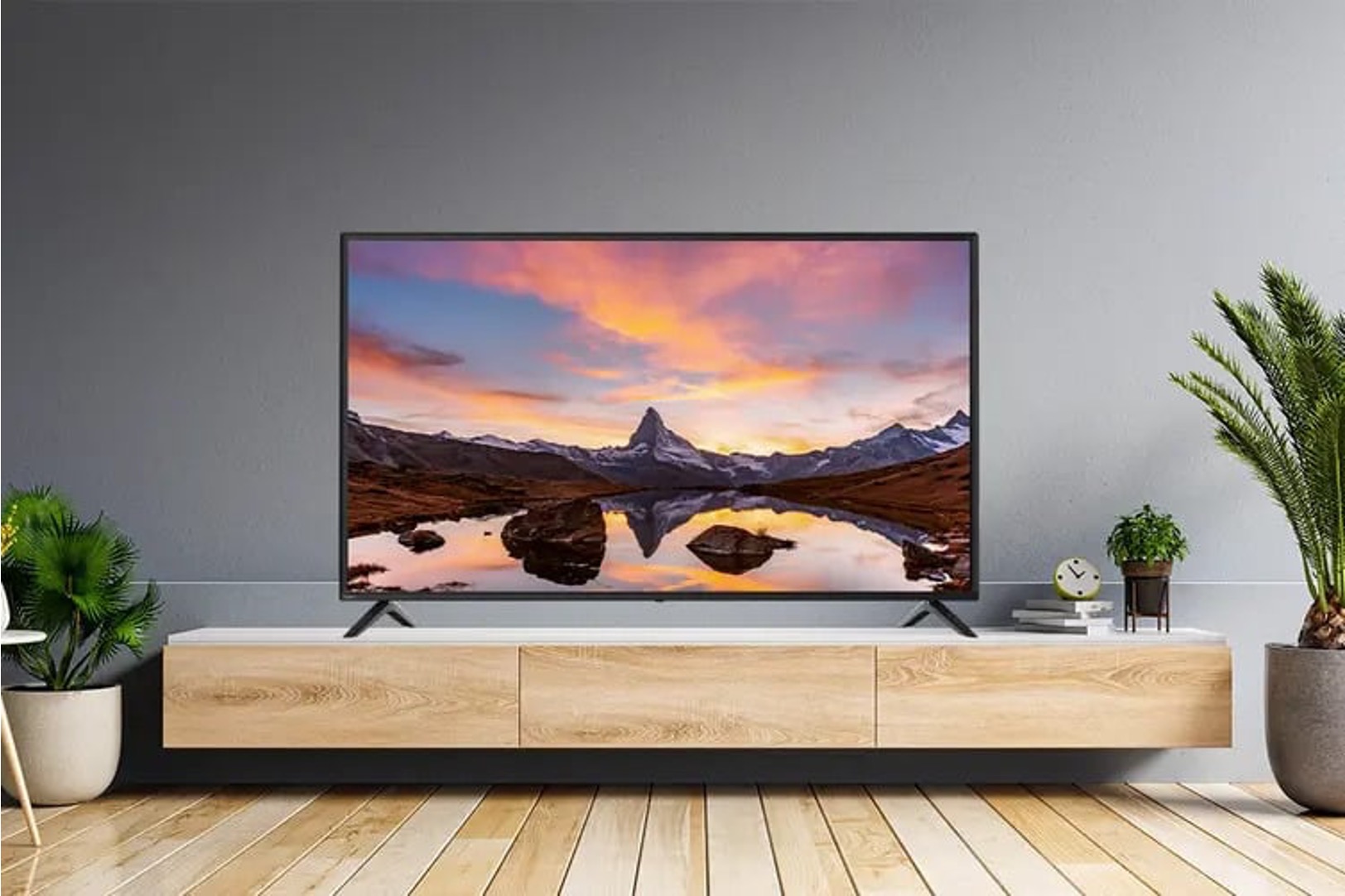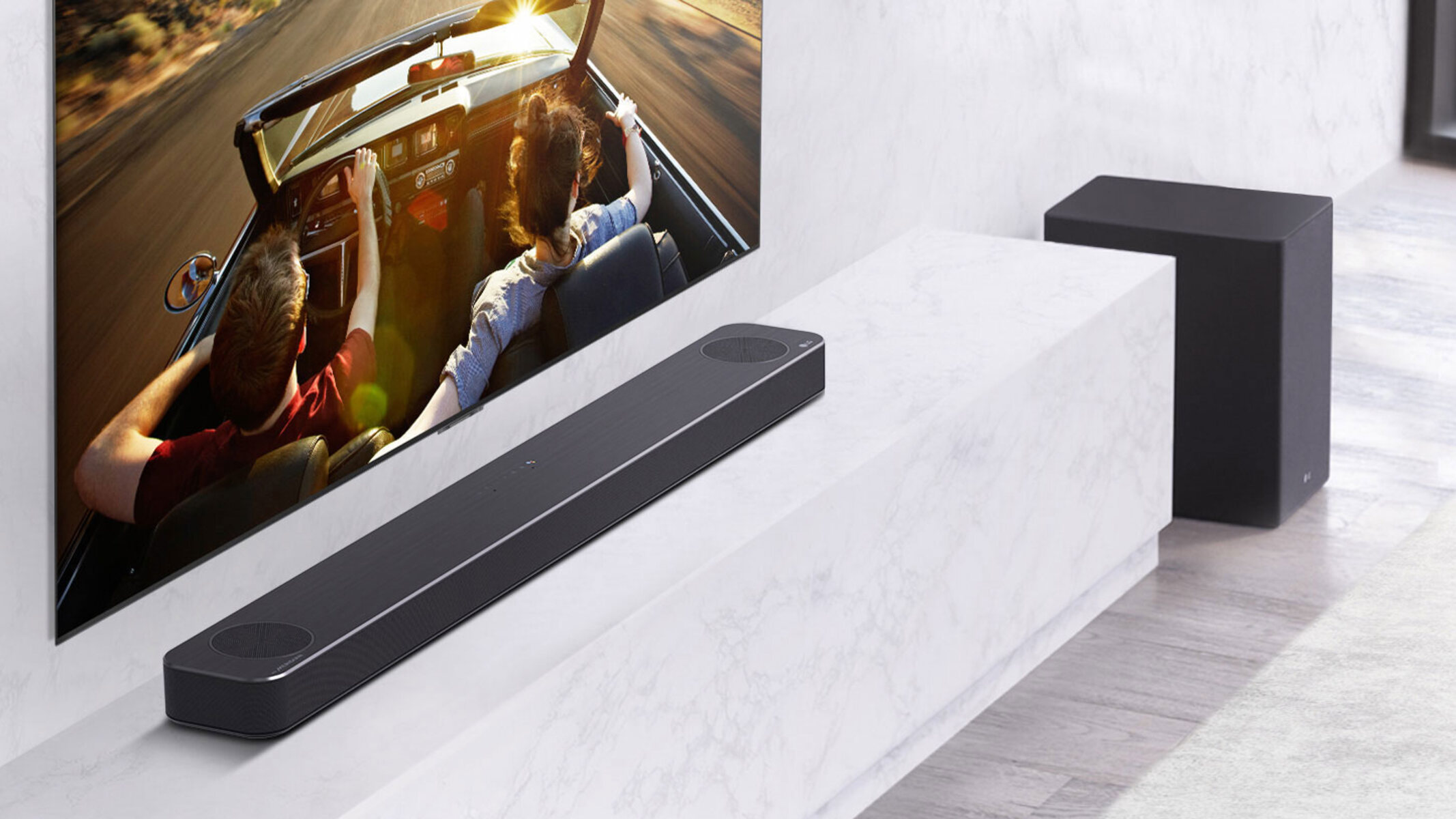Introduction
Welcome to our guide on how to connect rear speakers to your LG soundbar! Adding rear speakers to your soundbar setup can elevate your audio experience to a whole new level. By creating a more immersive audio environment, you can fully enjoy your favorite movies, TV shows, and music. However, it’s important to ensure compatibility and follow the correct steps for a successful connection.
LG soundbars are known for their impressive audio quality and sleek design, and they offer the option to expand the system with additional rear speakers. These speakers work in harmony with the soundbar to create a true surround sound experience, making you feel like you’re right in the middle of the action.
Connecting rear speakers to your LG soundbar may seem daunting at first, especially if you’re not familiar with the technical aspects. But fear not! In this guide, we will walk you through the necessary steps to make the process as seamless as possible.
Before we dive into the steps, it’s important to emphasize the benefits of adding rear speakers to your LG soundbar. First and foremost, it enhances the audio immersion by enveloping you in a surround sound field. Instead of the sound appearing to come from a single source (the soundbar), it fills the entire room, bringing movies and music to life. This is particularly noticeable in action-packed scenes, where the sound moves around the room, creating a more realistic experience.
Another reason to connect rear speakers is the improved audio imaging and localization. By having speakers at the back of the room, you get a more accurate soundstage, allowing you to pinpoint the location of specific sound effects or instruments in music. This adds depth and dimension to your listening experience, making it more enjoyable and engaging.
Now that you understand the benefits, let’s move on to the steps required to connect rear speakers to your LG soundbar. Don’t worry if you’re not a tech expert – we’ll keep things simple and provide easy-to-follow instructions to ensure a successful setup. So, let’s get started!
Reasons to Connect Rear Speakers to LG Soundbar
If you’re wondering why you should bother connecting rear speakers to your LG soundbar, let us give you a few compelling reasons. Adding rear speakers to your soundbar setup can significantly enhance your audio experience and take it to the next level. Here are some key benefits:
- Immersive Surround Sound: By adding rear speakers, you create a true surround sound system. This setup allows you to experience the audio from all directions, immersing you in the action and making you feel like you’re part of the movie or concert. Whether it’s the sound of footsteps behind you or the roar of a race car passing by, the rear speakers bring a new level of immersion to your entertainment.
- Enhanced Audio Localization: With rear speakers, sound effects and instruments are precisely localized in your listening space. This means you can accurately pinpoint the source of the sound, creating a more realistic and engaging audio experience. Whether you’re playing video games or watching movies, you’ll feel like you’re right in the middle of the action with the added dimension brought by the rear speakers.
- Expanded Soundstage: Rear speakers widen the soundstage, creating a more spacious and enveloping audio environment. Instead of the sound being confined to a single area in front of you, it fills the entire room, making the audio more dynamic and captivating. This is particularly beneficial for music enthusiasts who want to enjoy their favorite songs with a more immersive and concert-like experience.
- Improved Dialogue Clarity: Rear speakers can also enhance dialogue clarity, especially in larger rooms or when the listening position is far from the soundbar. By dispersing the audio across the room, the rear speakers help ensure that every word is clear and intelligible, even during intense action scenes or moments with background noise.
- Seamless Integration: LG soundbars are designed to seamlessly integrate with their rear speakers, ensuring a hassle-free setup process. The wireless connectivity between the soundbar and the rear speakers eliminates the need for messy cables, making the installation process quick and clean.
By connecting rear speakers to your LG soundbar, you can transform your living room into a true home theater experience. The added immersion, enhanced audio localization, expanded soundstage, improved dialogue clarity, and seamless integration will elevate your entertainment to new heights. So, don’t miss out on the opportunity to make the most of your LG sound system and enjoy a breathtaking audio experience.
Step 1: Check Compatibility with LG Soundbar
Before you start the process of connecting rear speakers to your LG soundbar, it’s crucial to ensure compatibility between the soundbar and the rear speakers. LG offers specific models of soundbars that are designed to work seamlessly with their corresponding rear speaker kits. Here’s what you need to do:
- Research the Compatible Rear Speaker Kit: Visit the LG website or refer to the user manual of your LG soundbar to find information about the compatible rear speaker kit. LG offers various rear speaker kits that are specifically designed to work with specific soundbar models. Note down the model number of the rear speaker kit that is compatible with your LG soundbar.
- Check the Model Number of Your Soundbar: Locate the model number of your LG soundbar. It is usually found on the back or bottom of the soundbar or mentioned in the user manual. Compare the model number of your soundbar with the compatible rear speaker kit model number to ensure compatibility.
- Verify Wireless Connection Support: Confirm that both your LG soundbar and the compatible rear speaker kit support wireless connectivity. Most LG soundbars use wireless technology to connect to the rear speakers, eliminating the need for long cables running across your room. Ensure that your soundbar and rear speaker kit have the necessary wireless capabilities.
Checking the compatibility between your LG soundbar and the rear speaker kit is crucial to ensure a successful connection. If the rear speaker kit is not specifically designed for your soundbar model, it may not work properly or may not be compatible at all. Therefore, it’s important to double-check the model numbers and wireless capabilities to avoid any compatibility issues.
Once you have confirmed the compatibility between your LG soundbar and the rear speaker kit, you can proceed with purchasing the kit and preparing for the setup process. In the next step, we will guide you through the process of purchasing the appropriate rear speaker kit for your LG soundbar model.
Step 2: Purchase Rear Speaker Kit
Now that you’ve confirmed the compatibility between your LG soundbar and the rear speaker kit, it’s time to purchase the necessary equipment. LG offers rear speaker kits that are specifically designed to work seamlessly with their soundbar models, ensuring optimal performance and compatibility. Follow these steps to purchase the right rear speaker kit for your LG soundbar:
- Visit the LG Website: Go to the official LG website or visit an authorized LG retailer to explore the available rear speaker kit options. Look for the kit that is compatible with your LG soundbar model. Take note of the model number and any specific features or specifications that meet your requirements.
- Compare Prices and Reviews: Compare the prices and read customer reviews to get an idea of the quality and performance of the rear speaker kit. This will help you make an informed decision and ensure you’re getting the best value for your money.
- Purchase from a Reliable Source: Once you’ve selected the rear speaker kit that meets your needs, make the purchase from a reliable source. Whether it’s directly from the LG website or from an authorized retailer, ensure that you’re buying from a reputable seller to guarantee authenticity and customer support.
It’s important to note that some LG soundbars may come bundled with the rear speaker kit as a complete package. In this case, you may not need to make a separate purchase. However, if the rear speaker kit is not included with your soundbar or if you want to upgrade to a different model, following the steps above will help you find and purchase the right rear speaker kit for your LG soundbar.
Once you have obtained the rear speaker kit, you are one step closer to enjoying a complete surround sound experience with your LG soundbar. In the next step, we will guide you through the process of unboxing and setting up the rear speaker kit.
Step 3: Unbox and Set Up Rear Speaker Kit
Congratulations on purchasing the rear speaker kit for your LG soundbar! Now, let’s move on to the exciting part – unboxing and setting up the rear speaker kit. Follow these steps to get started:
- Find a Suitable Location: Before unboxing the rear speaker kit, identify the ideal location for the speakers. Ideally, place the speakers behind your seating area for an optimal surround sound effect. Make sure there is enough space for the speakers to be positioned properly and that they are within a reasonable distance from the soundbar.
- Unbox the Rear Speaker Kit: Carefully unpack the rear speaker kit, ensuring that you don’t damage any of the components. The kit typically includes two rear speakers and a wireless receiver module.
- Connect the Wireless Receiver Module: Locate the wireless receiver module included in the kit. Connect the power cable to an available power outlet, and then connect the audio cable provided to the “Wireless Receiver” or “Rear Speaker” output on your LG soundbar. This will establish a wireless connection between your soundbar and the rear speakers.
- Position the Rear Speakers: Place the rear speakers in the previously identified location. Make sure they are oriented correctly, with the front-facing grilles pointing towards the seating area. You can choose to mount the speakers on speaker stands, wall mount them, or place them on elevated surfaces, depending on your preference and the available options.
- Connect the Rear Speakers to Power: Plug in the power cables for each rear speaker into an available power outlet. Ensure that the cables are securely connected and that the speakers have power.
- Power On the Rear Speakers and Soundbar: Turn on the rear speakers and the LG soundbar. Allow a few moments for the soundbar and the speakers to establish a wireless connection. Ensure that the soundbar and rear speakers are within the recommended range for wireless connectivity.
At this point, you have successfully unboxed and set up the rear speaker kit for your LG soundbar. The wireless connection between the soundbar and the rear speakers should now be established, allowing them to work in perfect harmony to deliver an immersive surround sound experience. In the next step, we will guide you through the process of connecting the rear speakers to your LG soundbar.
Step 4: Connect Rear Speakers to LG Soundbar
Now that you have unboxed and set up the rear speaker kit for your LG soundbar, it’s time to connect the rear speakers to your soundbar. Follow these steps for a seamless connection:
- Identify the Wireless Connection Button: Locate the wireless connection button on the rear speakers. This button is usually found on the back or bottom of the speakers. It may have a wireless icon or be labeled as a pairing button.
- Press the Wireless Connection Button: Press and hold the wireless connection button on one of the rear speakers until the LED indicator starts to blink. This indicates that the rear speaker is now in pairing mode.
- Activate Pairing Mode on the LG Soundbar: On your LG soundbar, locate the pairing button or refer to the soundbar’s user manual to find the appropriate button or menu option to activate pairing mode. Press and hold the pairing button until the LED indicator starts to blink rapidly to indicate that the soundbar is in pairing mode.
- Pair the Rear Speakers with the LG Soundbar: Within a few seconds of activating pairing mode on the soundbar, the rear speakers will establish a wireless connection. The LED indicators on the rear speakers and the soundbar should stop blinking and remain solid when the pairing is successful.
- Repeat the Process for the Second Rear Speaker: If you have two rear speakers in your kit, repeat the above steps for the second rear speaker. Press and hold the wireless connection button until the LED indicator blinks, activate pairing mode on the soundbar, and wait for the pairing process to complete.
Once the rear speakers are successfully paired with your LG soundbar, they are ready to deliver an immersive surround sound experience. It’s important to note that the pairing process may vary slightly depending on the specific model of your LG soundbar and rear speaker kit, so refer to the user manual for any specific instructions.
With the rear speakers now connected to your LG soundbar, you are one step closer to enjoying a complete surround sound setup. In the next step, we will guide you through the process of testing and adjusting the rear speaker settings to optimize your audio experience.
Step 5: Pair Rear Speakers with LG Soundbar
Now that you have connected the rear speakers to your LG soundbar, it’s time to pair them together to ensure optimal performance. Follow these steps to pair your rear speakers with the LG soundbar:
- Access the Soundbar Settings: Use the remote control or the control panel on the LG soundbar to access the settings menu. Look for the option that allows you to adjust the speaker settings.
- Select the Rear Speaker Pairing Option: Within the speaker settings menu, look for the option specifically related to the rear speakers. It may be labeled as “Rear Speaker Pairing” or something similar.
- Initiate Pairing Mode: Select the rear speaker pairing option to initiate the pairing mode for the soundbar. The soundbar will search for the paired rear speakers and establish a connection.
- Wait for Pairing Completion: Wait for a few moments while the soundbar searches for and pairs with the rear speakers. The LED indicator on the rear speakers and the soundbar should indicate a successful pairing.
- Test the Speaker Connection: Play audio through your LG soundbar and verify that the rear speakers are working. You should hear sound coming from the rear speakers, contributing to the full surround sound experience.
- Adjust Audio Settings: If necessary, fine-tune the audio settings on the LG soundbar to balance the audio output between the soundbar and the rear speakers. Adjusting the volume levels and speaker balance can help optimize the surround sound effect.
It’s important to note that the process of pairing the rear speakers with the LG soundbar may differ depending on the specific model and the user interface. Therefore, it’s recommended to refer to your LG soundbar’s user manual for detailed instructions on pairing the rear speakers.
Once you have successfully paired the rear speakers with your LG soundbar, you can start enjoying a truly immersive surround sound experience. Take some time to test different audio sources and content to fully appreciate the enhanced depth and realism brought by the rear speakers. In the next step, we will guide you through testing and adjusting the rear speaker settings to optimize your audio experience further.
Step 6: Test and Adjust Rear Speaker Settings
After pairing the rear speakers with your LG soundbar, it’s important to test and adjust the settings to ensure the best possible audio experience. Follow these steps to fine-tune the rear speaker settings:
- Select Audio Content: Choose a variety of audio content that includes different sound effects, such as movies with action-packed scenes or music with intricate instrument separation. This will allow you to test the capabilities of the rear speakers and evaluate their performance.
- Play the Audio: Start playing the selected audio content through your LG soundbar. Pay close attention to the sound distribution and the level of immersion created by the rear speakers.
- Assess Sound Balance: Listen to how sound elements move around the room and analyze the balance between the soundbar and the rear speakers. Ensure that the rear speakers are contributing to the surround sound effect without overpowering the front soundstage.
- Adjust Rear Speaker Volume: If you feel that the sound from the rear speakers is too soft or too loud compared to the soundbar, use your LG soundbar’s settings or remote control to adjust the volume levels specifically for the rear speakers. Find the balance that suits your preferences and provides a cohesive surround sound experience.
- Experiment with Sound Modes: Many LG soundbars offer various sound modes, such as cinema mode, music mode, or game mode. Experiment with different sound modes to find the one that enhances the performance and clarity of the rear speakers in different audio contexts.
- Consider Room Acoustics: Take into account the characteristics of your room, such as its size, shape, and acoustic properties. These factors will influence the overall sound experience. If needed, make adjustments to the placement of the rear speakers or consider adding acoustic treatments to optimize the sound quality.
By testing and adjusting the rear speaker settings, you can ensure that the surround sound effect is well-balanced and immersive. Remember that the optimal settings may vary based on personal preferences, the specific LG soundbar model, and the content you are playing. Take the time to fine-tune the settings to suit your audio preferences and enjoy a truly immersive surround sound experience.
With the rear speakers connected, paired, and optimized, you can now sit back, relax, and immerse yourself in the incredible surround sound experience delivered by your LG soundbar. Enjoy your favorite movies, TV shows, and music like never before, with audio that envelops you from all directions.
Conclusion
Congratulations! You have successfully learned how to connect and set up rear speakers with your LG soundbar. By following the steps outlined in this guide, you can now enjoy a truly immersive surround sound experience in your home. The addition of rear speakers to your LG soundbar setup enhances the audio immersion, improves localization, expands the soundstage, and provides a more realistic and captivating audio experience.
Remember to start by checking the compatibility between your LG soundbar and rear speaker kit. Ensure that they are specifically designed to work together for optimal performance. After purchasing the right rear speaker kit, proceed to unbox and set it up correctly. Connect the wireless receiver module, position the rear speakers, and power them on.
Next, pair the rear speakers with your LG soundbar by activating pairing mode on both devices. Once the pairing is successful, you can test and adjust the rear speaker settings. Experiment with different audio content, fine-tune the volume levels, and consider the room acoustics for the best surround sound experience.
Enjoy the heightened audio immersion as you watch movies, play games, or listen to music. The rear speakers, working in harmony with your LG soundbar, will transport you right into the heart of the action and create a captivating audio experience like never before.
Remember, the process of connecting and setting up rear speakers may vary slightly depending on your specific LG soundbar model and rear speaker kit. Always refer to the user manual provided with your devices for detailed and model-specific instructions.
Now that you’re armed with the knowledge and steps to connect rear speakers to your LG soundbar, it’s time to sit back, relax, and enjoy an immersive audio journey like never before. So grab your popcorn, turn on your favorite movie, and let the surround sound experience take you on an incredible audio adventure in the comfort of your own home.







